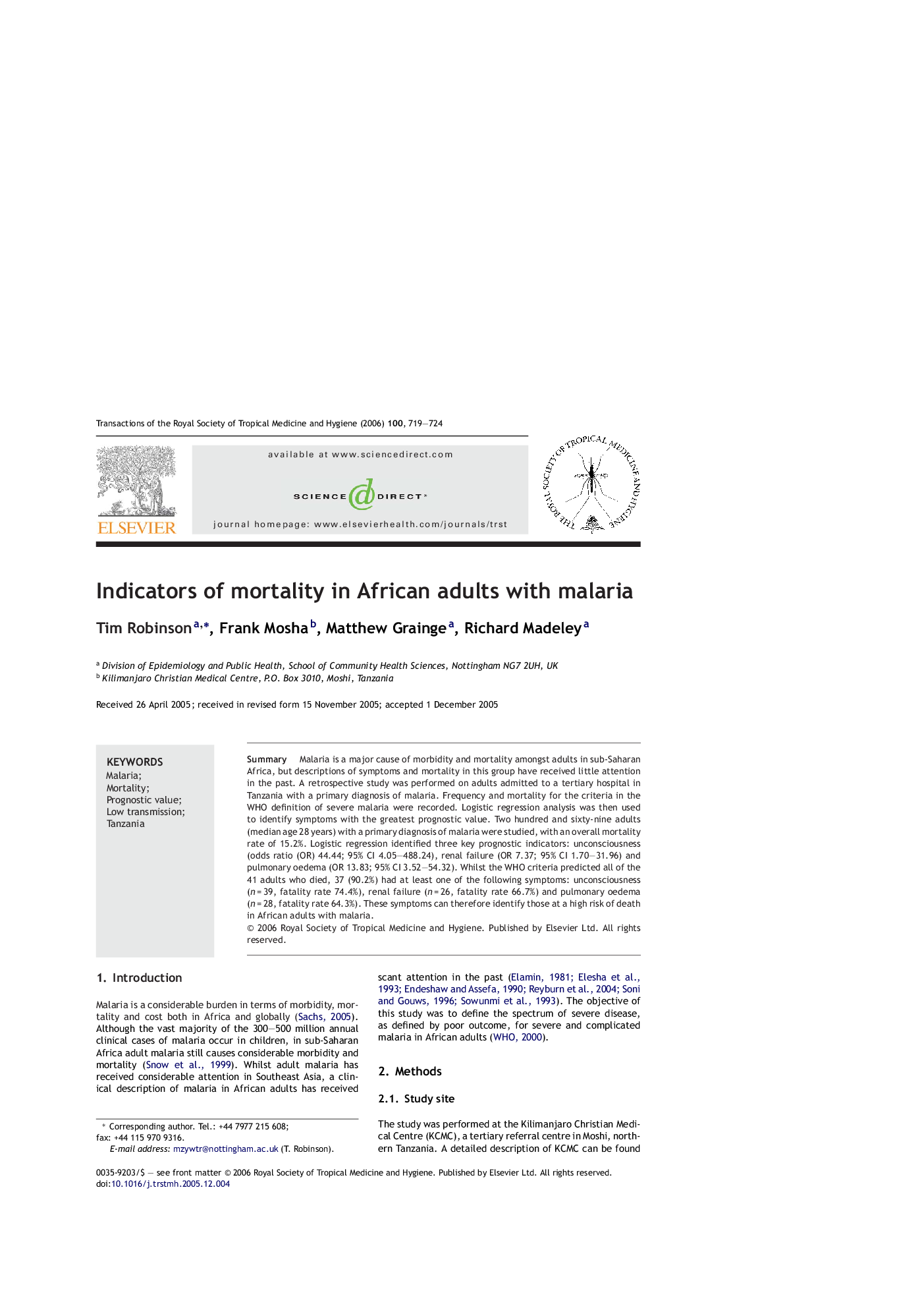| Article ID | Journal | Published Year | Pages | File Type |
|---|---|---|---|---|
| 3421162 | Transactions of the Royal Society of Tropical Medicine and Hygiene | 2006 | 6 Pages |
SummaryMalaria is a major cause of morbidity and mortality amongst adults in sub-Saharan Africa, but descriptions of symptoms and mortality in this group have received little attention in the past. A retrospective study was performed on adults admitted to a tertiary hospital in Tanzania with a primary diagnosis of malaria. Frequency and mortality for the criteria in the WHO definition of severe malaria were recorded. Logistic regression analysis was then used to identify symptoms with the greatest prognostic value. Two hundred and sixty-nine adults (median age 28 years) with a primary diagnosis of malaria were studied, with an overall mortality rate of 15.2%. Logistic regression identified three key prognostic indicators: unconsciousness (odds ratio (OR) 44.44; 95% CI 4.05–488.24), renal failure (OR 7.37; 95% CI 1.70–31.96) and pulmonary oedema (OR 13.83; 95% CI 3.52–54.32). Whilst the WHO criteria predicted all of the 41 adults who died, 37 (90.2%) had at least one of the following symptoms: unconsciousness (n = 39, fatality rate 74.4%), renal failure (n = 26, fatality rate 66.7%) and pulmonary oedema (n = 28, fatality rate 64.3%). These symptoms can therefore identify those at a high risk of death in African adults with malaria.
